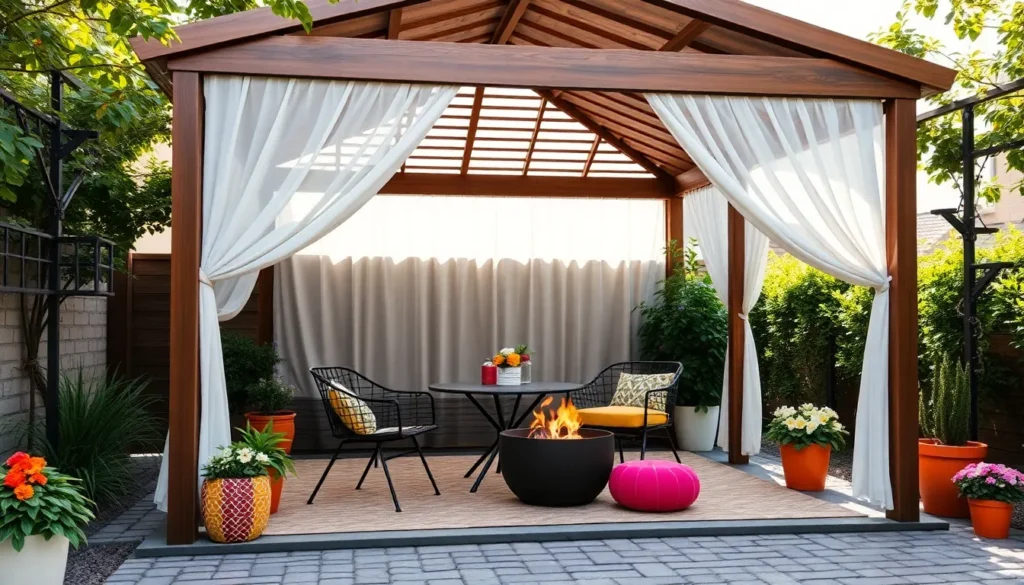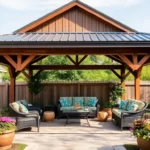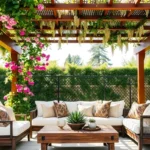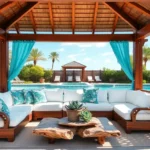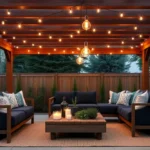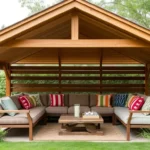Imagine stepping into your backyard, where a charming gazebo provides the perfect sanctuary for relaxation or gatherings. Whether you’re just starting to explore outdoor design or are a seasoned enthusiast, “14 Compact Gazebo Ideas for Small Yards” offers a treasure trove of inspiration tailored to maximize every square foot of your space.
In this guide, you’ll discover practical solutions that blend beauty and functionality, ensuring your outdoor area becomes a delightful extension of your home. Get ready to feel empowered as we unveil creative ways to transform your yard into an inviting haven, proving that even the coziest of spaces can host grand experiences.
Choose a Foldable Gazebo Design
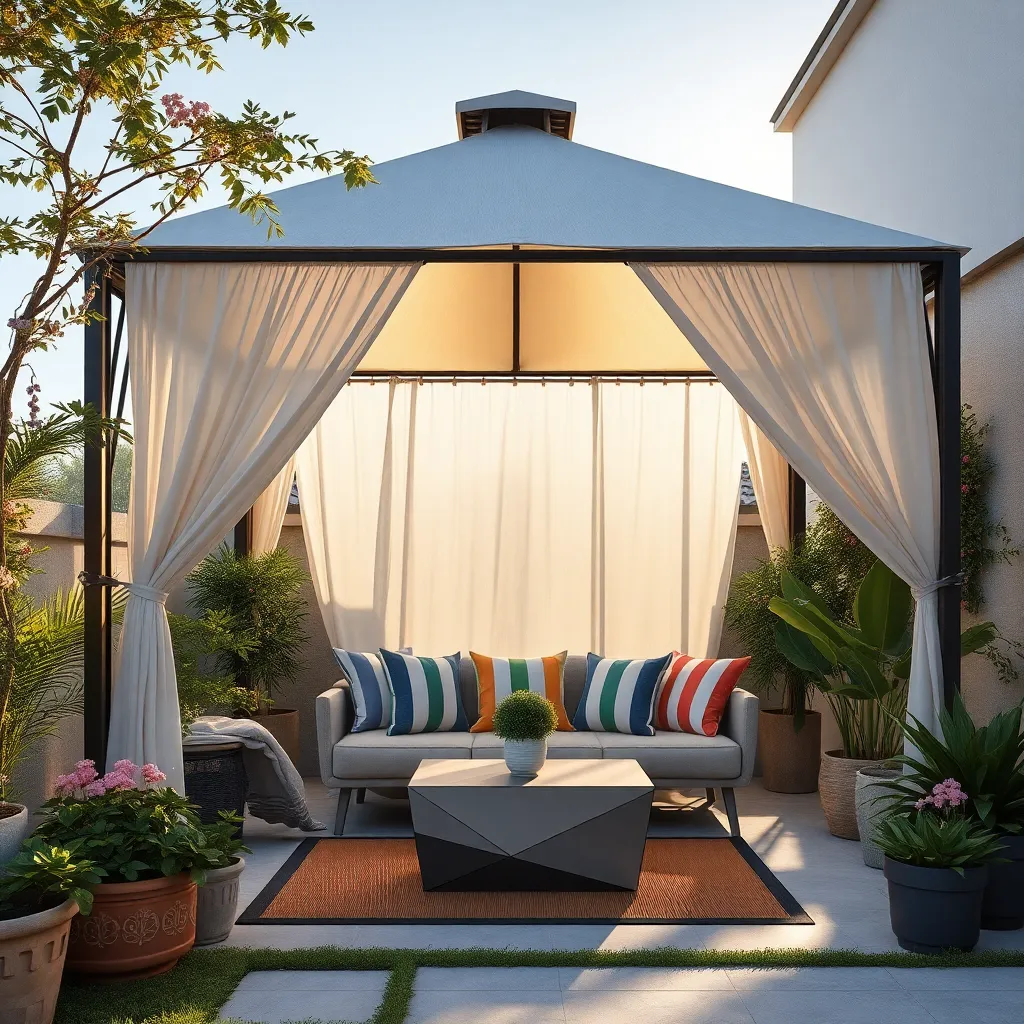
One of the most versatile options for small yards is a foldable gazebo, which can easily be set up or stored away, making it perfect for those with limited space. When choosing a foldable gazebo, consider materials like aluminum or steel for the frame, as these offer durability while remaining lightweight. For the canopy, opt for weather-resistant fabrics such as polyester with a UV coating, which will protect against sun and rain. Ensure the gazebo is the right size for your space, typically ranging from 8×8 to 10×10 feet, to maximize your outdoor living area without overwhelming it.
For a personalized touch, select a design that complements your garden’s aesthetics, such as a gazebo with decorative trims or a particular color scheme. Some advanced models offer built-in features like mosquito netting or adjustable sides, providing added comfort and flexibility. Look for foldable gazebos with easy assembly features, such as snap-lock systems or quick-release buttons, to simplify setup and takedown. This ensures that you can enjoy your outdoor oasis effortlessly and adapt your space as needed throughout the seasons.
Opt for Lightweight Materials
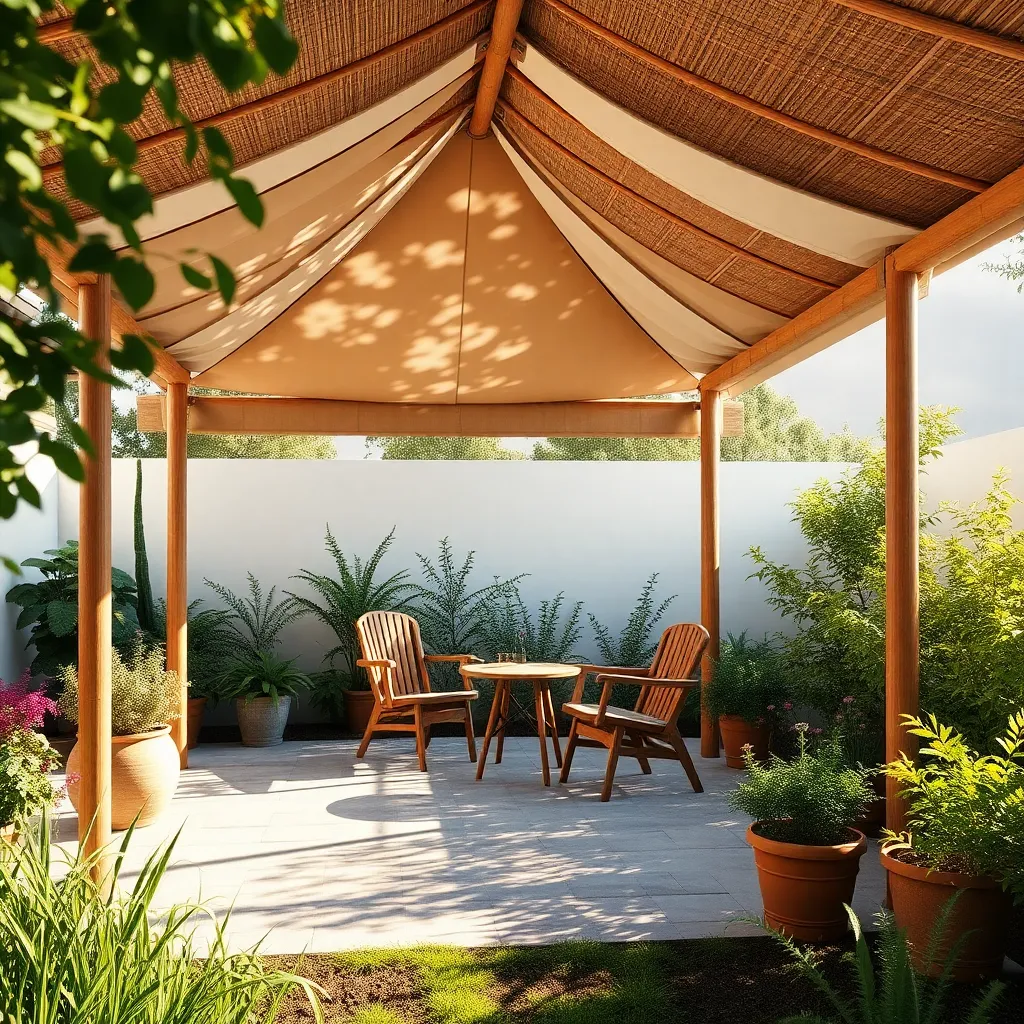
When selecting materials for your compact gazebo, opting for lightweight options like aluminum or polycarbonate can be a game-changer. These materials are not only easier to handle but also offer excellent durability, making them ideal for small yards. Aluminum frames provide a sturdy structure while remaining light enough to move if needed, and polycarbonate roofs offer UV protection without adding significant weight.
For a more advanced touch, consider integrating weather-resistant fabrics such as Sunbrella for the canopy, which is both lightweight and long-lasting. This fabric resists fading and mildew, ensuring your gazebo remains vibrant and functional over time. By focusing on lightweight materials, you can maintain the flexibility to rearrange your outdoor space as needed, which is particularly beneficial in smaller yards where adaptability is key.
Incorporate Built-in Seating
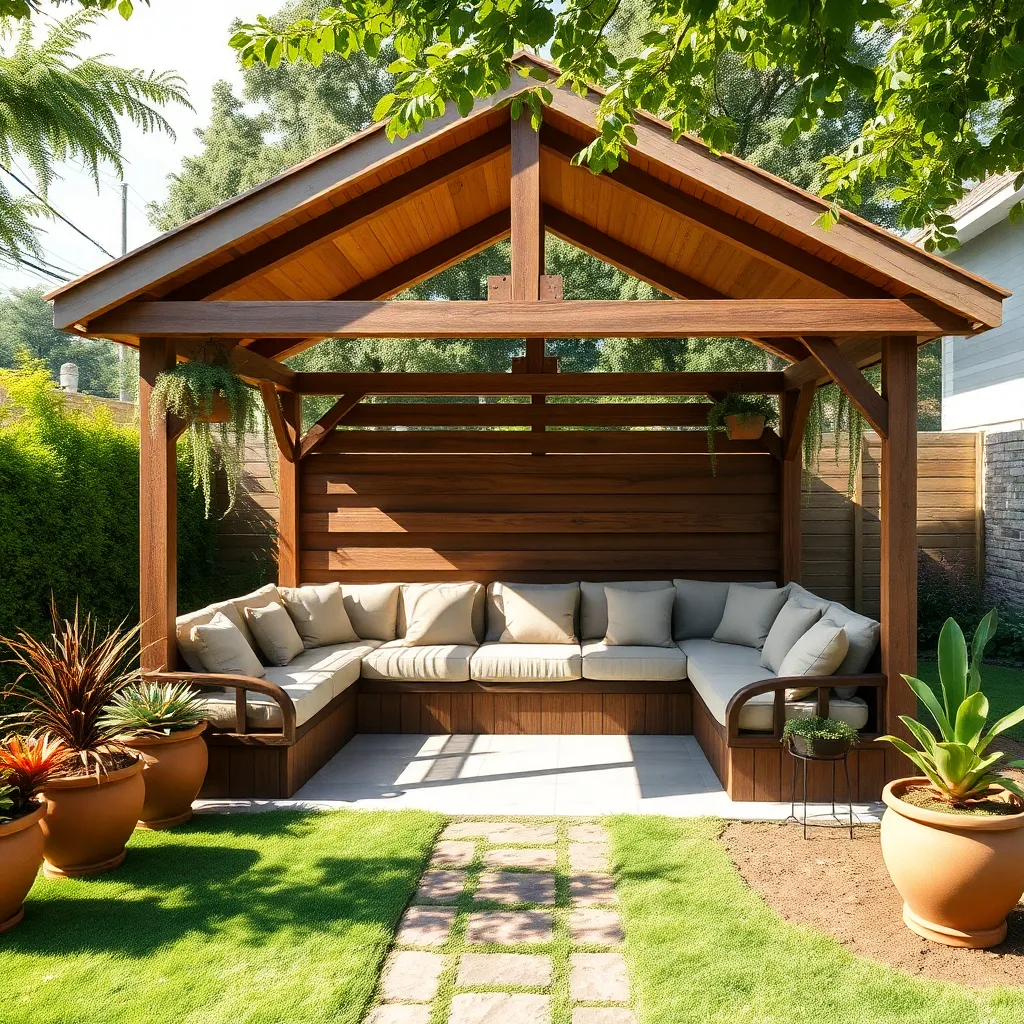
Integrating built-in seating into your gazebo design can greatly enhance both functionality and space efficiency, especially in smaller yards. Using materials like treated wood or composite decking ensures durability and low maintenance, while allowing you to customize the seating to match your gazebo’s style. For beginners, starting with a simple wraparound bench can maximize seating without overwhelming the area, while more advanced DIYers might incorporate storage under the seats to keep the space tidy.
To make the most of your built-in seating, consider adding cushions made with weather-resistant fabrics for comfort and longevity. Opt for a seating height of about 18 inches, which is standard for comfort, and allow for a depth of 16-20 inches to ensure ample space. For added flair, incorporate planters at the ends of benches or include a small side table built into the design to provide convenience without crowding. These thoughtful touches can transform a compact gazebo into a cozy, inviting retreat.
Select a Neutral Color Palette
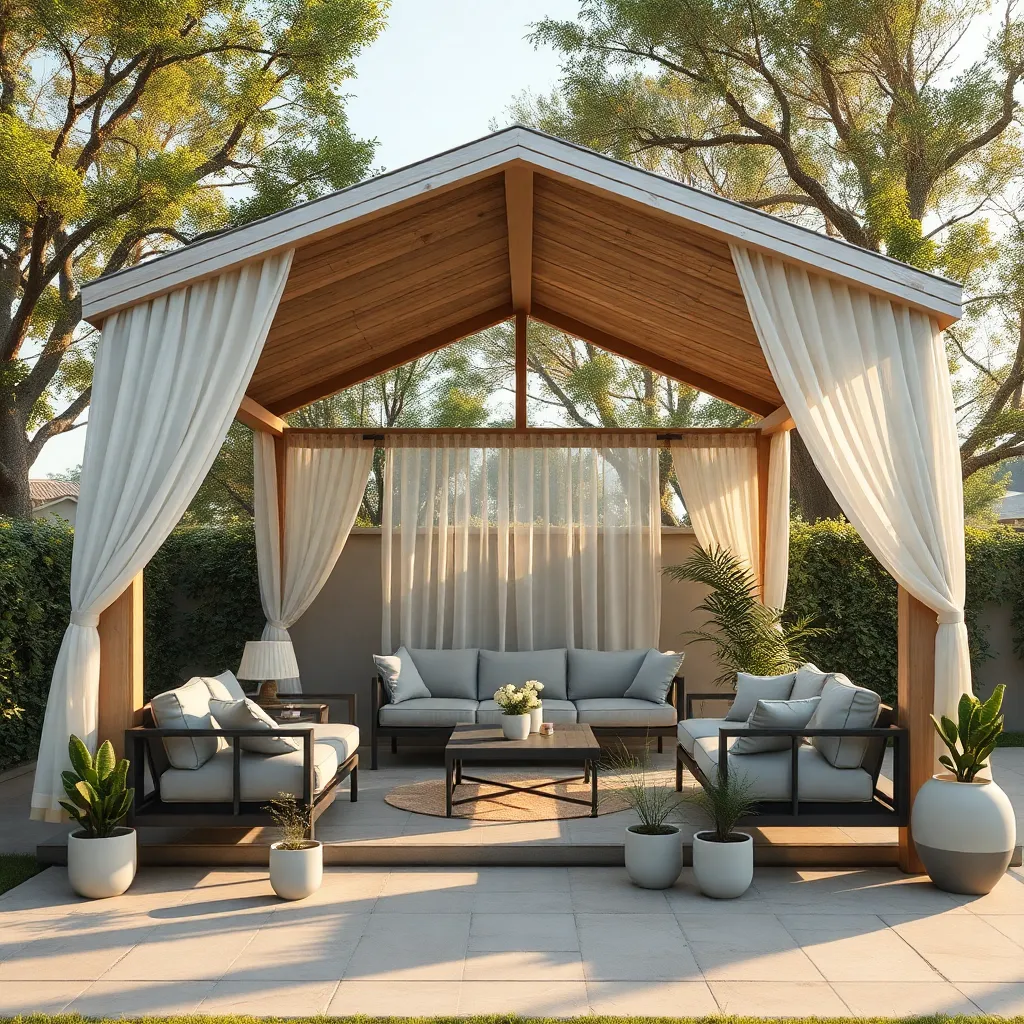
When selecting a color palette for your compact gazebo, consider opting for neutral tones like beige, taupe, or soft grays. These colors tend to blend seamlessly with natural settings, ensuring your gazebo complements rather than overwhelms your small yard. Use materials like weather-resistant fabrics for cushions and curtains that enhance durability and maintain a chic, understated look.
For a more advanced touch, consider incorporating textural contrasts such as a rattan canopy or a wooden frame with a light stain. This approach adds visual interest without straying from a neutral theme. If you’re looking to add a hint of color, choose muted shades for accessories such as planters or lighting to maintain the cohesive, serene ambiance essential for smaller spaces.
Use Vertical Planters for Space
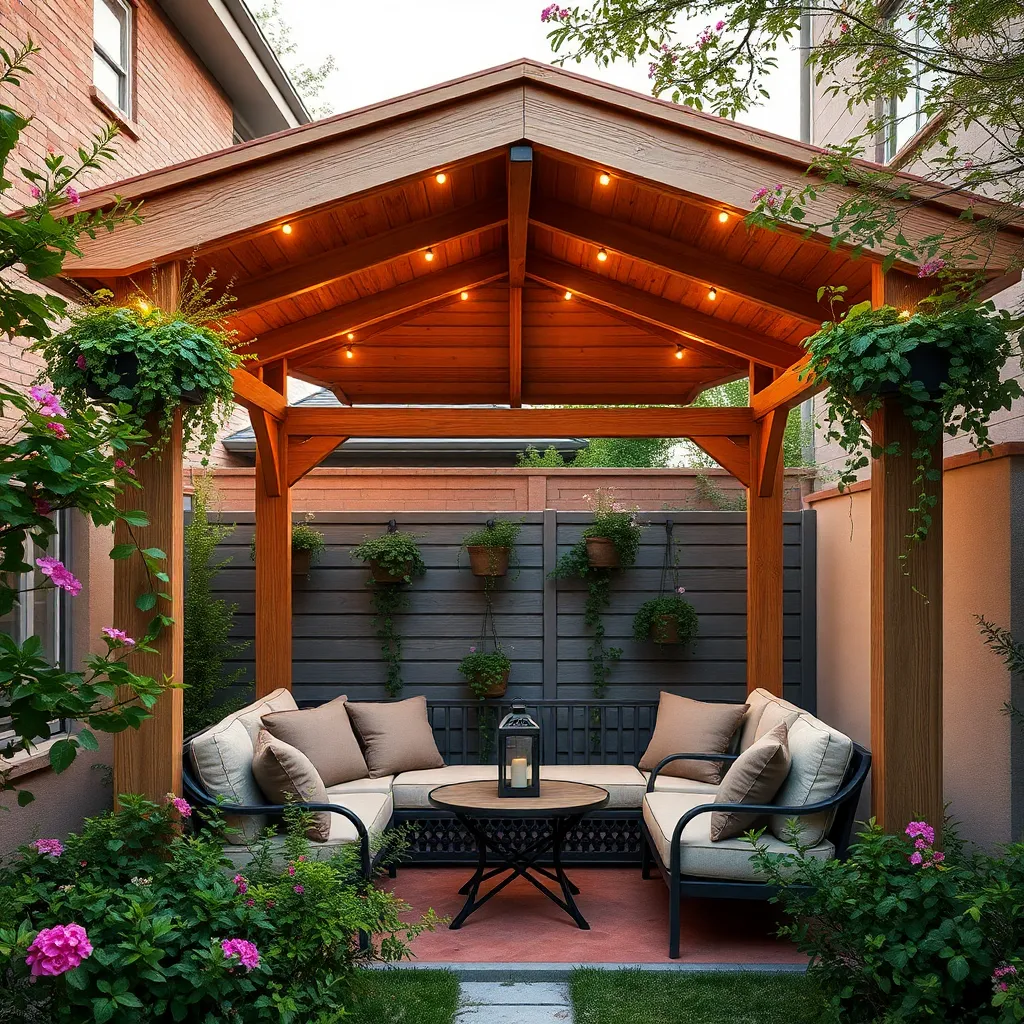
Vertical planters are a fantastic way to maximize space in a small yard, especially when adding greenery to your gazebo area. By using wall-mounted or free-standing vertical planters, you can create a lush, green backdrop without sacrificing valuable ground space. Consider materials like cedar or metal for durability, and ensure that your planters have adequate drainage to keep your plants healthy. For beginners, start with simple herbs or succulents that require minimal maintenance.
Integrating vertical planters into your gazebo design can also serve as an artistic element. Opt for a mix of plant heights and textures to add depth and interest. Advanced gardeners might experiment with a variety of trailing vines, like ivy or jasmine, to create a natural curtain effect. When installing, ensure that your vertical planters are securely anchored and positioned to receive the right amount of sunlight. This setup not only enhances the aesthetics of your outdoor space but also offers a practical solution for maximizing your gardening area.
Install Compact, Retractable Roofs
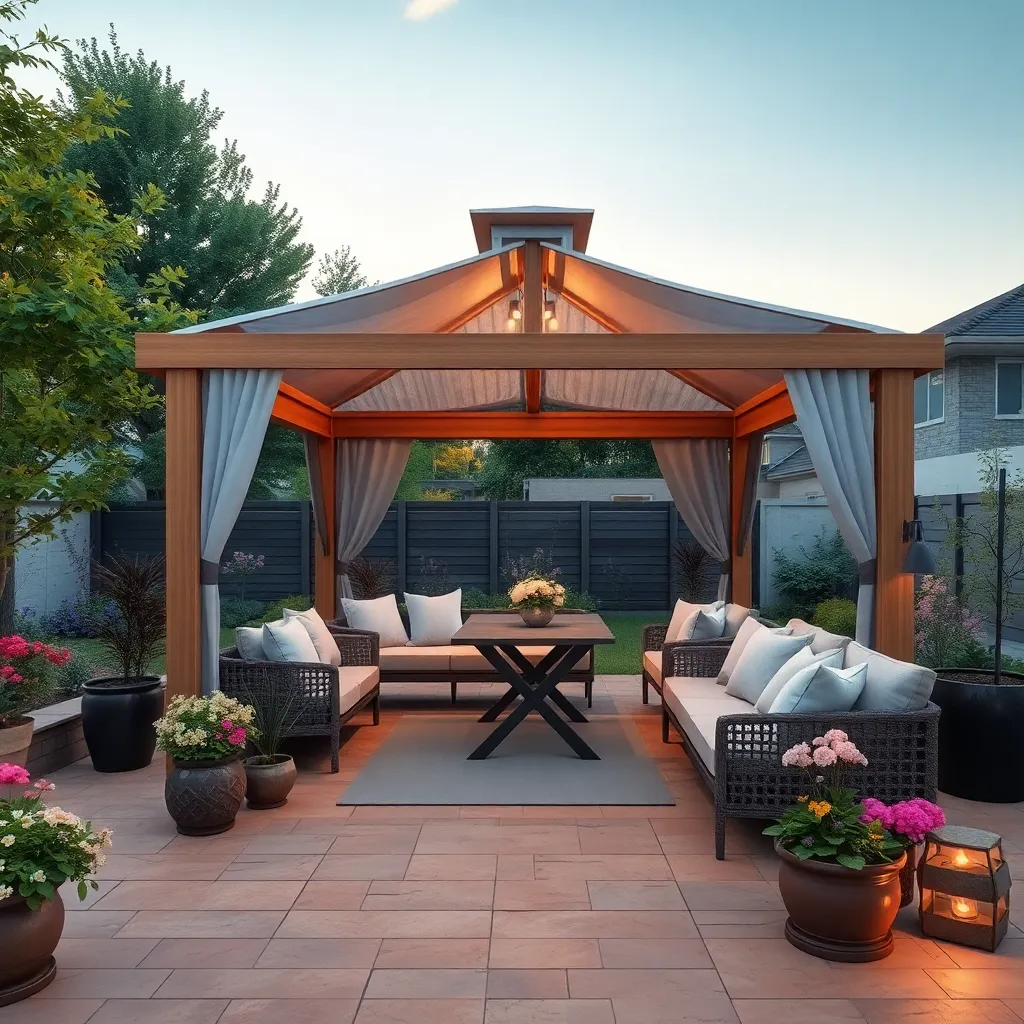
Installing a compact, retractable roof can transform your small gazebo into a versatile outdoor space. Opt for materials like durable aluminum or powder-coated steel for the frame, ensuring longevity and resistance to weather. For the retractable cover, consider high-quality, UV-resistant fabrics like acrylic or polyester, which offer protection from the elements while maintaining a lightweight profile. This setup not only provides shelter from rain and sun but also allows you to enjoy the open sky whenever desired.
For those looking to enhance functionality, consider adding a motorized retraction system, which can be controlled via remote or smartphone for ease of use. Ensure the dimensions of your retractable roof match the size of your gazebo, typically ranging from 6×6 to 10×10 feet for small yards. Advanced users might integrate solar-powered systems to operate the roof, providing an eco-friendly solution that saves on energy costs. Prioritize professional installation if you’re not confident in your DIY skills to ensure safety and optimal performance.
Position Near Existing Foliage
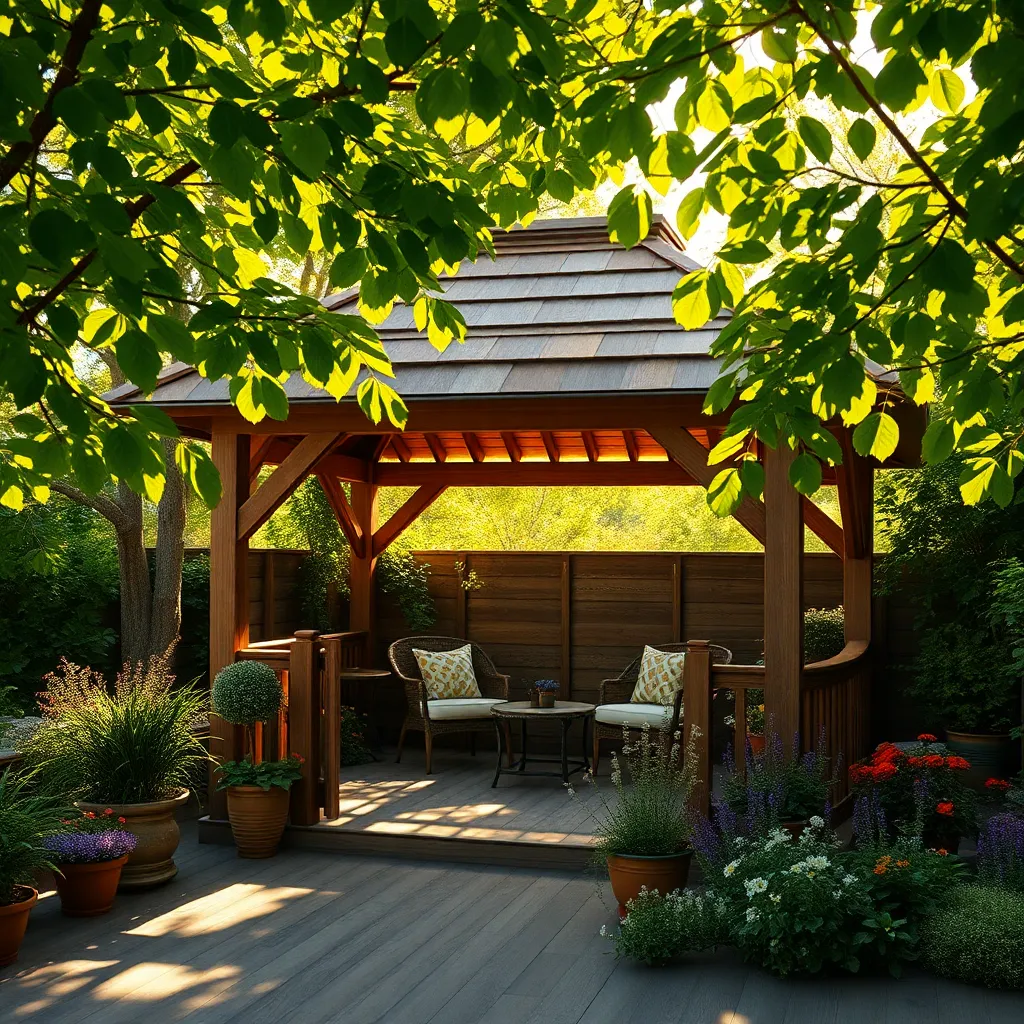
Positioning your compact gazebo near existing foliage can offer natural shade and create a more integrated outdoor space. Choose a location where surrounding trees or shrubs provide partial coverage, as this can help reduce heat and UV exposure while enhancing the aesthetic appeal of your yard. If you’re a beginner, start by assessing the foliage density and ensure there’s enough room for your gazebo without disturbing root systems. For those with more experience, consider the seasonal changes in your garden to optimize shade throughout the year.
When selecting materials for your gazebo, consider those that complement the natural elements. Wooden structures tend to blend seamlessly with greenery and can be easily customized with stains or paints that match your garden’s color palette. For a more advanced approach, install trellises on the gazebo’s sides to encourage climbing plants, such as ivy or jasmine, which can enhance privacy and add a lush, living element to the structure. Always ensure your chosen materials are durable and weather-resistant to withstand outdoor conditions.
Utilize Corner Spaces Efficiently
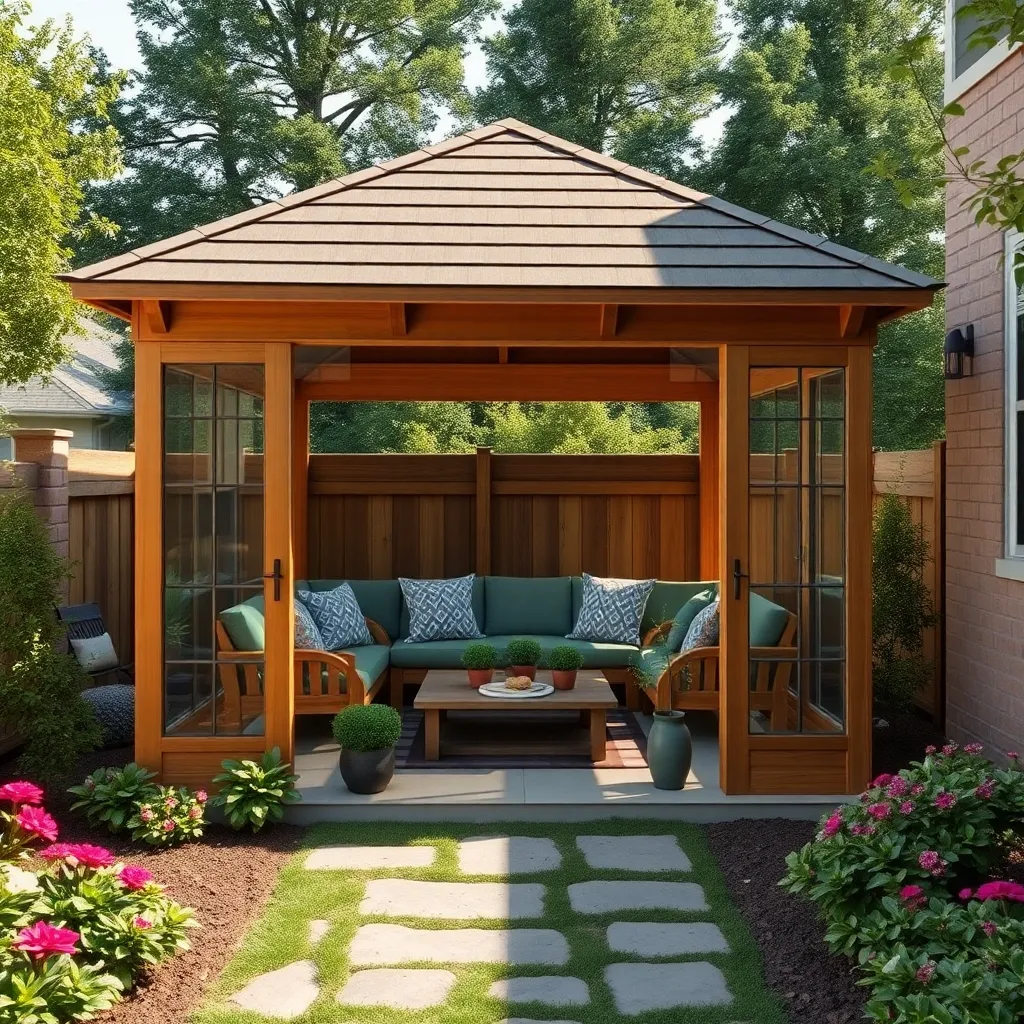
Transforming corner spaces into functional gazebo spots can maximize the utility of your yard. Consider selecting a triangular or hexagonal gazebo to fit snugly into a corner, optimizing space while adding a charming focal point. Opt for lightweight materials like aluminum or cedar, which are durable yet easy to manage and install. A corner placement naturally creates a cozy nook, perfect for a small seating area or even a quaint outdoor dining setup.
For those seeking a more advanced approach, integrate your gazebo with existing structures like fences or walls for added stability and privacy. Enhance the space with built-in planters or climbing vines to seamlessly blend the gazebo with its surroundings. Choose weather-resistant fabrics for any covers or curtains to ensure longevity. By utilizing corner spaces wisely, you not only save room but also create an inviting retreat that enhances the overall aesthetics of your yard.
Add Multi-Functional Storage Benches
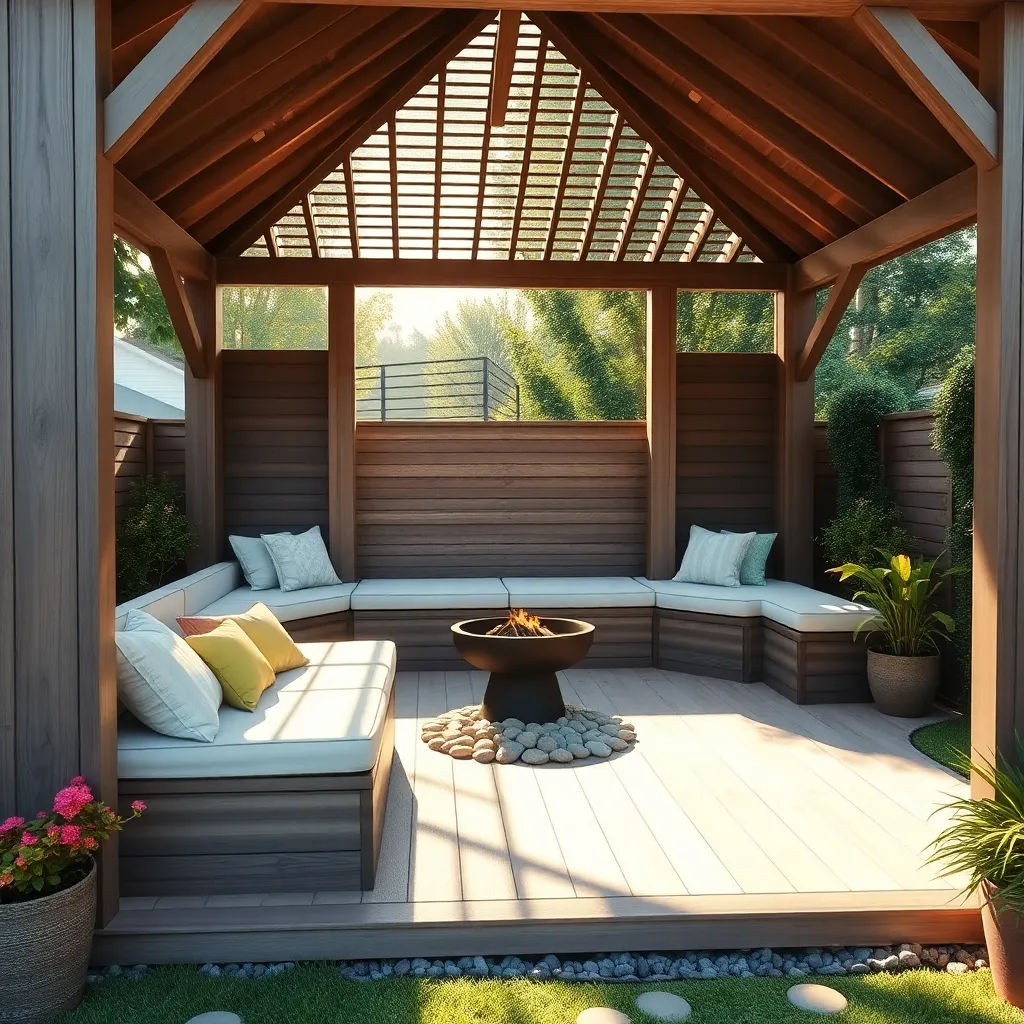
Transform your gazebo into a multifunctional haven by adding storage benches that serve both as seating and a clever way to tuck away gardening tools, cushions, and outdoor essentials. Opt for weather-resistant materials like cedar or teak for durability, and consider incorporating a hinged lid with soft-close mechanisms for ease of use. For beginners, start with simple pre-made benches that fit your space. More experienced DIY enthusiasts can customize the benches to include features like built-in planters or even a small table attachment for added functionality.
To maximize space, choose benches with dimensions that suit your gazebo’s size, typically ranging from 48 to 60 inches in length for compact areas. Consider adding a few decorative elements like cushions in weatherproof fabric to enhance comfort while maintaining practicality. Additionally, use these benches to define the seating area within your gazebo, ensuring a cozy and organized outdoor living space. For a polished look, match the bench design with other gazebo elements, such as the color of the shelter or any existing furniture, to create a cohesive and inviting environment.
Employ Transparent Gazebo Walls

For those looking to enhance their gazebo’s aesthetic while maintaining a sense of openness, employing transparent gazebo walls is a superb choice. These walls can be made from materials like clear polycarbonate or acrylic panels, which are durable and provide excellent weather protection. Not only do they allow natural light to flood the space, but they also create an illusion of a larger area, making them perfect for small yards. Make sure to choose panels with UV protection to prevent discoloration and prolong the life of your materials.
Installation is straightforward, often involving attaching the panels to a simple frame with screws or brackets, which you can do yourself with basic tools. For a more advanced setup, consider sliding or folding wall systems to offer flexibility in your design. This allows you to open up the gazebo when the weather is pleasant or close it off for added warmth and comfort during cooler evenings. Consider incorporating a small roof overhang to reduce rainwater runoff and protect the transparent panels from direct exposure to the elements.
Integrate Solar-Powered Lighting
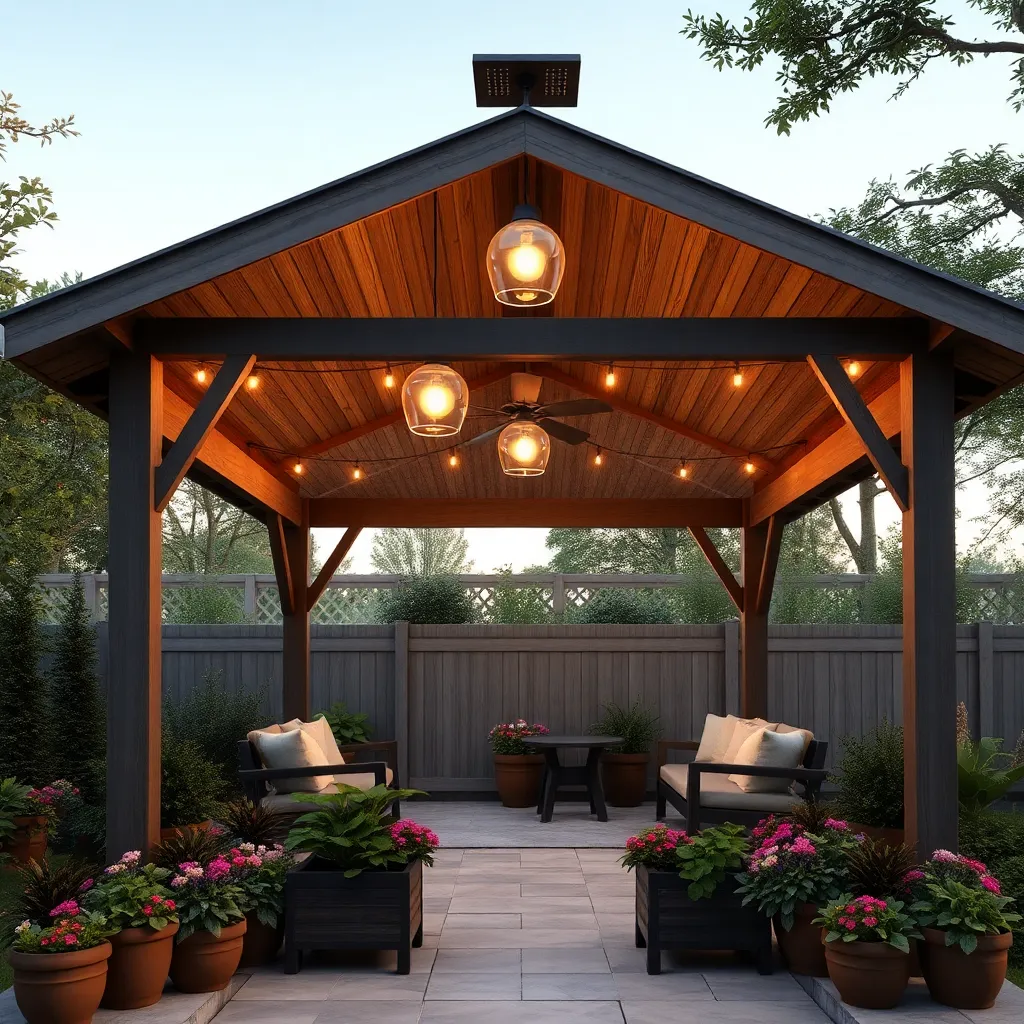
Integrating solar-powered lighting into your gazebo is a fantastic way to enhance its functionality while maintaining an eco-friendly approach. These lights are not only energy-efficient but also easy to install since they don’t require complex wiring. For beginners, consider selecting solar string lights or lanterns that can be hung around the gazebo perimeter or from the ceiling to create a cozy ambiance. These options often come with built-in sensors that turn on automatically at dusk, offering convenience and a warm glow without any hassle.
For those looking to elevate their outdoor setup further, explore advanced options like solar-powered LED spotlights that can be strategically placed to highlight specific features of your gazebo or garden. Choose models with adjustable panels to ensure maximum sunlight absorption during the day, optimizing their performance at night. When installing, aim for a spacing of 3-4 feet between lights to achieve balanced illumination. This setup not only enhances visibility but also adds a touch of elegance to your small yard, making it a delightful retreat any time of the day.
Include Modular, Stackable Furniture
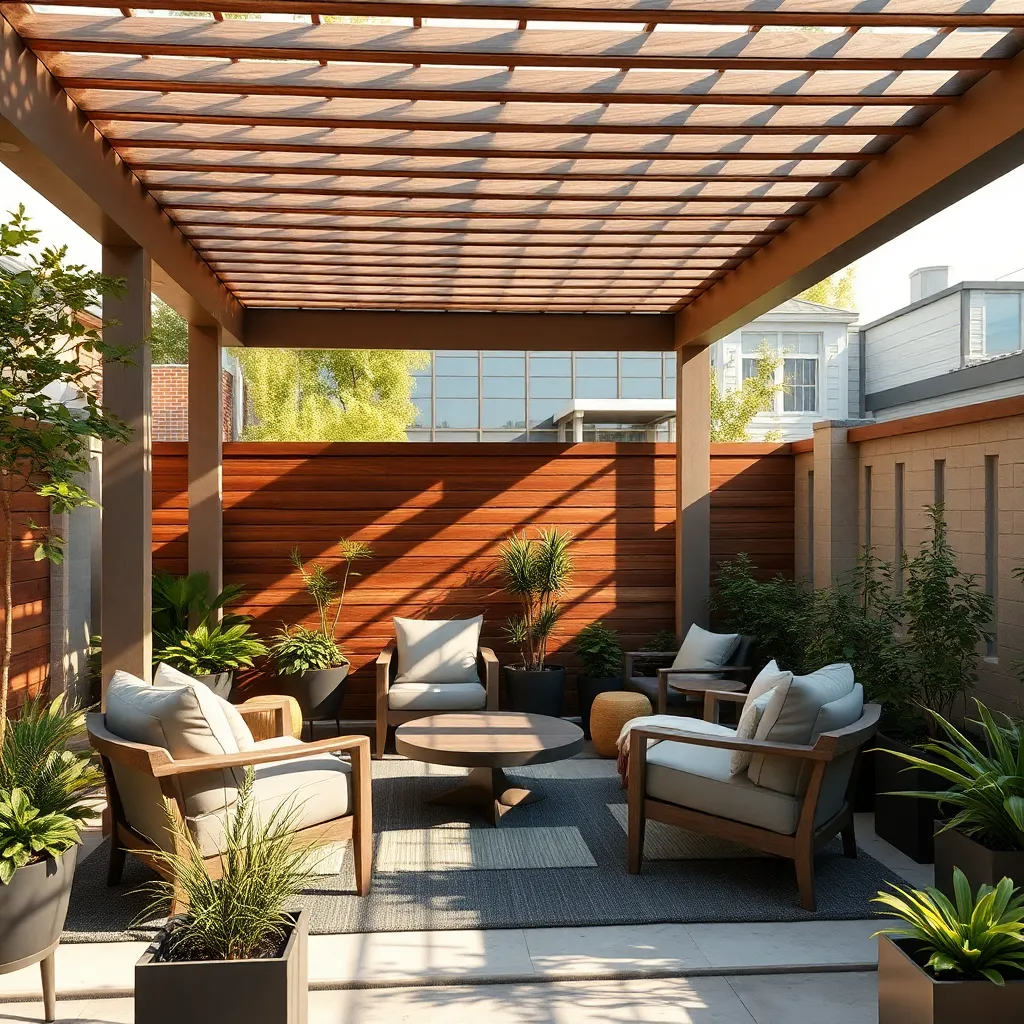
Incorporating modular, stackable furniture into your compact gazebo is an excellent way to maximize space and functionality. Look for pieces that offer flexibility, such as stackable chairs and tables that can be easily rearranged or stored when not in use. Materials like weather-resistant wicker or aluminum are great choices for durability and style, while neutral colors can blend seamlessly with various outdoor themes. For beginners, start with a basic set that includes a small table and two to four chairs. Advanced gardeners might explore customizable options that allow for expansion as needed.
To make the most of your outdoor space, consider furniture that serves multiple purposes. Convertible benches that transform into picnic tables or storage ottomans can save space while adding utility. An advanced tip is to select furniture with integrated features like built-in planters or lighting, which can enhance the ambiance of your gazebo. Always check the dimensions of your gazebo carefully and ensure there’s ample room to move around comfortably once the furniture is in place. This thoughtful approach will help you create a versatile and inviting outdoor retreat.
Decorate with Hanging Lanterns
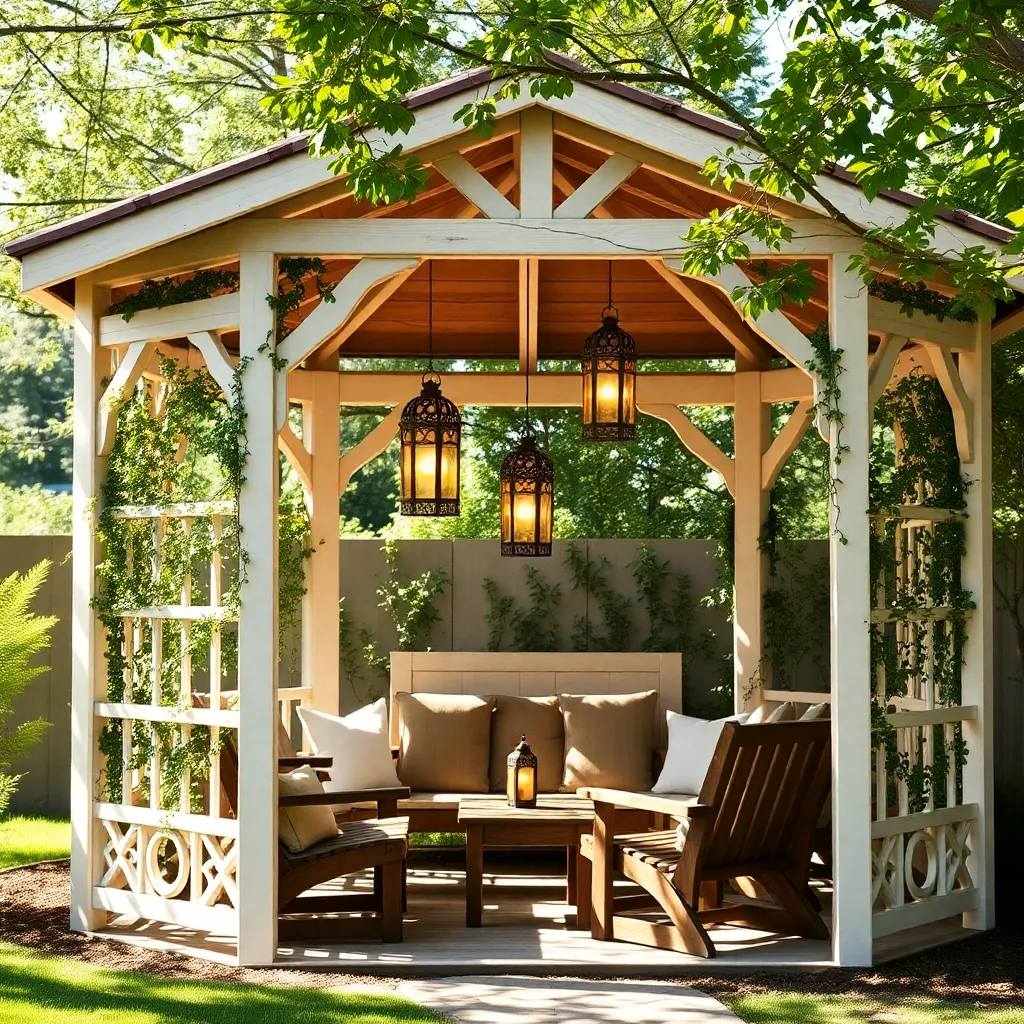
Transform your small gazebo into a magical retreat by decorating with hanging lanterns. These versatile lighting fixtures can be hung from the gazebo’s beams or rafters to create an inviting atmosphere. Consider using solar-powered lanterns for an eco-friendly option, or opt for LED battery-operated ones for a low-maintenance solution. Choose lanterns made of weather-resistant materials like metal or durable plastic to ensure they withstand the elements year-round.
For a cohesive look, select lanterns that complement the overall color scheme and style of your outdoor space. Mix and match lantern sizes for visual interest, or hang them at varying heights to add depth and dimension. For those with a knack for DIY, consider customizing plain lanterns with weatherproof paint to match your personal style. Whether you prefer a rustic, bohemian vibe or a sleek, modern aesthetic, hanging lanterns can elevate your gazebo’s ambiance with minimal effort.
Create a Minimalist Décor Style
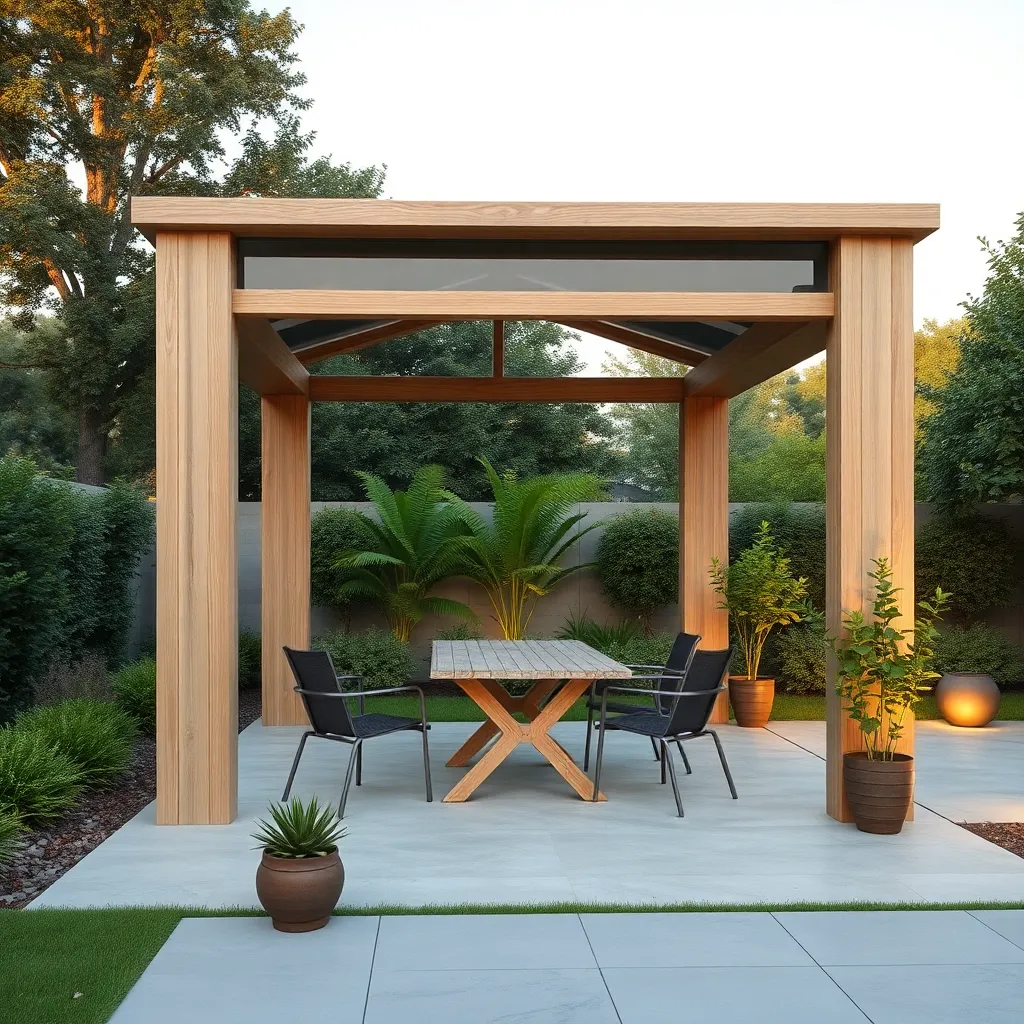
Incorporating a minimalist décor style into your compact gazebo can create a serene and uncluttered atmosphere. Begin by choosing a neutral color palette, such as whites, grays, or soft earth tones, for your structure. Opt for natural materials like bamboo or lightly stained wood for a clean and airy feel. Keep furnishings simple with a few essential pieces like a sleek bench or a minimalist table. Focus on quality over quantity to maintain an uncluttered space.
To enhance the minimalist aesthetic, pay attention to the small details. Use streamlined and functional outdoor furniture with clean lines and avoid overly decorative elements. Incorporate a limited selection of accessories, such as a single potted plant or a simple outdoor rug, to add texture without overwhelming the space. For advanced touches, consider integrating built-in seating or storage solutions that blend seamlessly with the gazebo’s design. This not only maximizes space but also maintains the minimalist ethos of simplicity and functionality.
Conclusion: Creating Beautiful Outdoor Spaces
In exploring the ’14 Compact Gazebo Ideas for Small Yards,’ we’ve uncovered a treasure trove of relationship-building concepts, each as unique and inviting as the cozy gazebos themselves. From fostering open communication to carving out intimate spaces for connection, these ideas remind us of the significance of setting aside dedicated time and space for our partners. Whether it’s creating a retreat for shared activities or designing a sanctuary for meaningful conversations, each concept emphasizes the importance of nurturing the bond you share.
To put these ideas into action, why not choose one concept that resonates most with your relationship right now and start implementing it today? Perhaps it’s designing a cozy corner for weekly date nights or planning a weekend project to build a shared space.
Remember, relationships thrive on intention and effort. Don’t let these insightful ideas slip away—bookmark this article as a reference guide for your ongoing journey towards relationship success. As you cultivate these spaces of love and connection, you’re not only strengthening your current relationship but also laying a solid foundation for a fulfilling future together. Let this be the beginning of deeper connections and lasting happiness.

